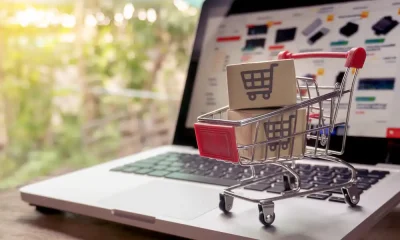Management
10 Customer Retention Strategies For Small Businesses

Marketing a small business can be challenging and expensive. However, a lot of that expense is finding new customers – retaining them is much cheaper. So, as a small business owner with a limited budget, keeping as many clients as possible makes financial sense.
Bear in mind that many companies of all sizes lose a lot of customers every year. The average loss is around 20 percent, but you can quadruple that figure in particular sectors. If this builds up over time, you can see how easy it is for business growth to slow and reverse. It is essential to look into better ways of keeping your customers.
Here are ten strategies to explore, so look and see if you can fit them into your business planning.
1. Embrace complaints
Customer complaints can be tough to deal with – but they will happen. Often, a business will be judged on handling those complaints rather than the original issue itself.
So, to get started with your retention strategy, look into ways to improve your complaint response. You should also find a system to find complaints, as it is a well-known fact that many unhappy customers will stay silent. If you can reach out to them before they go home and brood on the incident, it might give you a second chance.
Just because a customer doesn’t tell you about a bad experience doesn’t mean they don’t occur. And there is a strong possibility that they will mention it to others in their social circles. Your customer base could dwindle, and you lose more than just one client from one poor experience.
2. Plug the leaks
Take good care with your customer service and identify areas causing you to leak customers. Of course, all companies will lose some customers, which is called attrition, and you need to know your attrition rate. Is it growing, staying the same or dropping? Ideally, you’re losing fewer customers.
If your attrition rate is growing, take a long hard look at your customer service. The simple fact is that over time businesses can become complacent. Some tasks don’t get done well or at all. Things slip, and customers go elsewhere.
Refocus on service and productivity. An internal auditor can identify the process gaps and where productivity has dropped. Set new standards and hire new staff to improve productivity. Consider outsourcing your customer service or other functions to get a better result.
3. Understand the customer’s value
All clients have a lifetime value. If they buy one product from your store, that figure won’t amount to much. But, if you keep getting repeat business from that person over several weeks, months, and years, it’s easy to see the value of retaining them. And it will give you a good indication of the amount you can spend to keep them – and still maintain a profit.
Introducing loyalty cards or programs is an excellent way to measure customer value. We’ll go into that a little later, but it has a lot of benefits. It can give you a clear picture of your customer’s buying habits so that you can make more accurate estimates of their lifetime value.
4. Start promoting aftersales
Aftersales is a great way to get more from each customer and keep that vital relationship going.
Let’s say you are a stone flooring firm. You sell tiles for a kitchen floor, and the customer pays you to fit them. It might seem like the end of the transaction, but getting them on an aftercare or maintenance plan will give you far more opportunities. You will return to your customer’s house a year after the sale to professionally clean the tiles. By that stage, they might consider upgrading their bathroom floor – and you will be on hand to offer your services.
Marketing and advertising are all about tiny reminders and simple ways of keeping at the forefront of your customer’s minds.
As a small business, you don’t have the benefit of billboard and TV ads, so this aftersales technique is a clever way to keep yourself in focus.
5. Have principles
The modern consumer has many different choices. And people are beginning to be a lot more critical when choosing the companies they buy from or use.
A good example would be the rise in prominence of green businesses. With so much focus on climate change, many consumers are selecting eco-friendly firms. These types of principles can make you stand out from the competition. Your respect for the environment is something you share with your customers. If played right, it should lead to a longer-term relationship.
6. Reach out
Reaching out to your customers regularly will help you stay at the forefront of their minds. There are a few options available. After-sales calls work a treat just to check their satisfaction levels. And, of course, you can use email to send out newsletters and special offers based on past purchases.
According to Market Motive, email marketing can help you retain customers. And it can help build up your customer’s lifetime value. It is a valuable tool often forgotten by many small businesses – avoid including your company within their ranks.
7. Create a customer calendar
Of course, reaching out is all well and good. But when should you contact your customers? We’ve already mentioned after-sales calls and letters. But you can also send birthday or seasonal cards, event invitations, and pre-sales offers.
Not only will you get a good response, but people will be happy that they are in your thoughts. It makes them feel valued and reinforces why they chose to do business with you in the first place. So, try creating a customer calendar. Highlight special dates, and use them with your marketing to get the best results.
8. Train your employees
All employees who come into contact with customers need the proper training. Each represents your business; carelessness or a bad attitude will cost you and your clients. There is no such thing as perfect customer service, of course. But, with training, you can bring your clients up to speed with your expectations and create standards.
There are a few basics of customer service that work well for retention. Immediate responses from emails or phone calls are an excellent place to start. You also have to deliver what you promise – every time. Finally, use your minor business status as an advantage. Treat your customers like friends rather than clients. It’s something they won’t get from your bigger corporate competitors.
9. Loyalty programs
Big superstores and retailers offer customers loyalty cards for a simple reason. It’s because they work. Once people start getting rewards for spending money, they are far more likely to return – and the results can be astonishing.
It can give you loyalty from customers, but you can also use these programs to learn more about their shopping habits. It provides you enormous insight into the products they like, such as the rate at which they buy them. So, you can then use this critical info to design an attractive package to encourage them to return repeatedly.
Loyalty programs don’t have to mean cards, though. You can track each customer and reward them for every year they have been shopping with you. Or, you can offer special discounts after they have spent a certain amount at your store or on your services. You can do a lot – and the only thing stopping you is the limits to your creativity.
10. Measure everything
Our final point is a critical one that you can’t ignore. You won’t know how successful your new methods are unless you have a way of measuring them. You must define your retention rate – for each week, month, or year. You can do this in several different ways, but the simplest method is as follows. Take the number of customers you have served by the end of the specified period.
Work out the number of new customers you have picked up, and subtract it from your original number. Finally, divide the result by the number of clients you started with. That should give you a percentage of the people still using your services. Once you have that figure, it will be easy to see where your new improvements are working.
As you can see, many ways can help you improve your customer retention rates. Try putting this into action for your business; with some luck, you should start seeing positive results. Let us know your thoughts in the comments section below, and feel free to leave any tips if you are willing to share them!









